icebergs

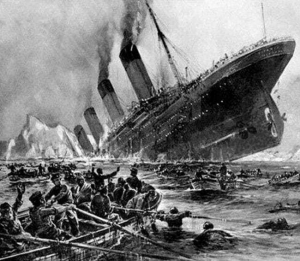 Following the Titanic disaster, a strange kind of job was formed…that of an iceberg mover. This was something I had never heard of, and it seems rather strange. I am aware that icebergs are chucks of ice, and obviously that they float, but to have the job of actually keeping track of an iceberg’s location so that you can go out to move it out of the shipping lanes is a really odd job, if you ask me. Still, the icebergs floating in the oceans, were a serious danger to the ships. Even if other ships were in the area and had seen the icebergs, that doesn’t mean other ships couldn’t fall prey to the icebergs. Many of those ships shut down their radios overnight…the most dangerous time for icebergs.
Following the Titanic disaster, a strange kind of job was formed…that of an iceberg mover. This was something I had never heard of, and it seems rather strange. I am aware that icebergs are chucks of ice, and obviously that they float, but to have the job of actually keeping track of an iceberg’s location so that you can go out to move it out of the shipping lanes is a really odd job, if you ask me. Still, the icebergs floating in the oceans, were a serious danger to the ships. Even if other ships were in the area and had seen the icebergs, that doesn’t mean other ships couldn’t fall prey to the icebergs. Many of those ships shut down their radios overnight…the most dangerous time for icebergs.
The job of the iceberg movers was to keep track of the icebergs and if they moved into the shipping lanes, to go in and move them to a different location. Now, that makes me wonder how heavy the icebergs were, and how hard it would be to move them. I also wonder how dangerous it would be, since icebergs have an uncanny knack for flipping over. Of course, iceberg movers are in a boat. Still, it’s hard to say what things can go wrong when an iceberg flips over. I really don’t think this would be a job I would want.
It seems like they might have had trouble hiring people to do this job, or maybe they just needed a more stable crew of men for the job. Whatever the case may be, The International Ice Patrol (IIP), was founded a year later. The IIP is operated by the US Coast Guard. The IIP tracks the location of icebergs and provides safe routes around them. If an iceberg is in a particularly unsafe area, it might become necessary to move it. Then, the iceberg will be towed out of the area. There is no way that they will be able to stop shipwrecks from 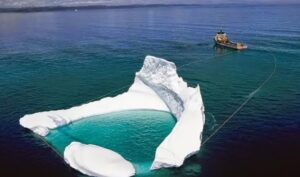
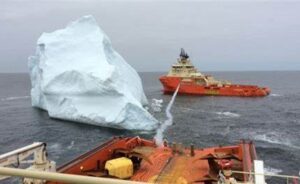 happening, but if we can remove the dangers created by icebergs, maybe we will see a few less shipwrecks in the future. Since Titanic, there have been five ship that went down after hitting an iceberg. Lives were lost in the first two following Titanic, but in the last three, everyone was saved. The last one was in 2007.
happening, but if we can remove the dangers created by icebergs, maybe we will see a few less shipwrecks in the future. Since Titanic, there have been five ship that went down after hitting an iceberg. Lives were lost in the first two following Titanic, but in the last three, everyone was saved. The last one was in 2007.

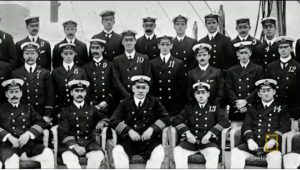 When we are going through things that others have gone through, it can be extremely helpful to listen to what they know. That advise is important for everyone, everywhere, because if we don’t listen and heed those warnings, we might just find ourselves learning a very hard lesson…that hindsight is always 20/20.
When we are going through things that others have gone through, it can be extremely helpful to listen to what they know. That advise is important for everyone, everywhere, because if we don’t listen and heed those warnings, we might just find ourselves learning a very hard lesson…that hindsight is always 20/20.
On April 14th, 1912, SS Mesaba, a ship on the same route as RMS Titanic had traveled through waters with dangerous icebergs floating around just a few hours before Titanic was to be there. The Mesaba sent out a warning about icebergs to every ship in the area, including  the Titanic. The message went out, and the crew of the Titanic received it, but the radio operator who received the message didn’t think it was important enough to deliver to the captain. This was probably because the Titanic’s radiomen were very busy. The passengers were sending and receiving messages with the mainland. It was a show of prestige. Even with the busy day, one would think that a message about an unusually high number of icebergs would have gone into the “high priority” pile, but of course hindsight is always 20/20. I’m sure that if John George Phillips, the Titanic’s senior wireless operator, had known then what he soon would know, he would have rushed the message to the captain immediately.
the Titanic. The message went out, and the crew of the Titanic received it, but the radio operator who received the message didn’t think it was important enough to deliver to the captain. This was probably because the Titanic’s radiomen were very busy. The passengers were sending and receiving messages with the mainland. It was a show of prestige. Even with the busy day, one would think that a message about an unusually high number of icebergs would have gone into the “high priority” pile, but of course hindsight is always 20/20. I’m sure that if John George Phillips, the Titanic’s senior wireless operator, had known then what he soon would know, he would have rushed the message to the captain immediately.
So many things would likely have been different, if people had only known what the future would bring. People wouldn’t have even been on the Titanic had they known. Then again, if the crew had known that an iceberg could do so much damage to an “unsinkable” ship, they would have listened when they were warned of very serious danger lurking in the waters ahead of them. They would have been crawling through the area, or they would have stopped for the night. They certainly wouldn’t have been pushing the ship to near maximum speed in an area of ocean that was filled with icebergs as dangerous as a floating mine or a torpedo. Unfortunately, hindsight is always 20/20, and the only reason we know the dangers now, is that the ship is at the bottom of 
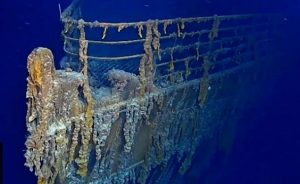 the ocean, having succumbed to the very fate everyone was so sure could never happen to the great Titanic.
the ocean, having succumbed to the very fate everyone was so sure could never happen to the great Titanic.
We can’t always know the dangers that lie ahead of us, but it is a wise man that pays attention to warnings of danger so that appropriate action can be taken. We can live with the saying, hindsight is always 20/20, or we can do our very best not to have to see that 20/20 hindsight with great regret.
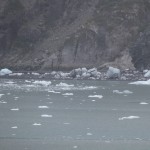 When I think of glaciers and icebergs, I often think of the Titanic. Sailing into an area that is filled with floating ice has a tendency to take your mind down that road. Of course, the icebergs we saw were not of the size that the Titanic hit, at least not the ones we got very near to. We were also traveling quite slowly, and in daylight, making it easier to see if there is a dangerous piece of ice that we need to maneuver around. Nevertheless, in the back of my mind, lived a little picture of Titanic sinking beneath the water. It wasn’t that I was afraid, because I wasn’t, but rather a matter of being able to relate to the situation the Titanic was in, and knowing that no one was doing anything about it, when it was the Titanic heading into a death trap. I was thankful that so much more is known today about the damage that icebergs can cause, because it makes it possible for us to get close to these amazing natural ice sculptures, to view their amazing beauty, and yet, still remain safe.
When I think of glaciers and icebergs, I often think of the Titanic. Sailing into an area that is filled with floating ice has a tendency to take your mind down that road. Of course, the icebergs we saw were not of the size that the Titanic hit, at least not the ones we got very near to. We were also traveling quite slowly, and in daylight, making it easier to see if there is a dangerous piece of ice that we need to maneuver around. Nevertheless, in the back of my mind, lived a little picture of Titanic sinking beneath the water. It wasn’t that I was afraid, because I wasn’t, but rather a matter of being able to relate to the situation the Titanic was in, and knowing that no one was doing anything about it, when it was the Titanic heading into a death trap. I was thankful that so much more is known today about the damage that icebergs can cause, because it makes it possible for us to get close to these amazing natural ice sculptures, to view their amazing beauty, and yet, still remain safe.
As we sailed closer and closer to the Margerie Glacier, in Glacier Bay, I found myself completely in awe of the beauty God had created from ice. No human could have created 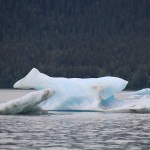
 something so grand. As we came closer and closer, I couldn’t stop snapping pictures. I wanted to get every possible angle of the glacier. I wanted to forever fix it in my memory files. I wanted to be able to picture it in my mind…and I can. I think I will always be able to see the stunning blue color and the amazing crevasses. There is never enough time to see it for as long as you would like to, and all too soon, we had to move on. In all, we saw close up views of three glaciers, and distant views of countless others. The ice filled water began to disappear, and we couldn’t see the icebergs anymore. I found that I was feeling a little bit sad that our time at the glaciers was over. It felt like we had only just arrived, and now we were leaving.
something so grand. As we came closer and closer, I couldn’t stop snapping pictures. I wanted to get every possible angle of the glacier. I wanted to forever fix it in my memory files. I wanted to be able to picture it in my mind…and I can. I think I will always be able to see the stunning blue color and the amazing crevasses. There is never enough time to see it for as long as you would like to, and all too soon, we had to move on. In all, we saw close up views of three glaciers, and distant views of countless others. The ice filled water began to disappear, and we couldn’t see the icebergs anymore. I found that I was feeling a little bit sad that our time at the glaciers was over. It felt like we had only just arrived, and now we were leaving.
Of course, I’ve seen glaciers before, but I simply don’t remember them being as beautiful as the ones we saw in Alaska. The colors were so stunning. It was almost like the blues were  painted onto the ice. The Margerie Glacier is 21 miles long, beginning on Mount Root, at the Alaska/Canada border, and it is a mile wide. The sheer size of the glacier is amazing to me. And, of course, the other glaciers in Alaska are of similar size. The colors are that amazing blue that you see in the ocean waves. I loved looking at the glaciers and icebergs. It seemed so peaceful there, and yet in reality, they are constantly changing…they are a work in progress. Each day, chunks fall off, and they add snow often, so the beauty changes and changes. But one thing is for sure, no matter how they change, they never lose that beauty. And that is the memory that will live on in my memory files.
painted onto the ice. The Margerie Glacier is 21 miles long, beginning on Mount Root, at the Alaska/Canada border, and it is a mile wide. The sheer size of the glacier is amazing to me. And, of course, the other glaciers in Alaska are of similar size. The colors are that amazing blue that you see in the ocean waves. I loved looking at the glaciers and icebergs. It seemed so peaceful there, and yet in reality, they are constantly changing…they are a work in progress. Each day, chunks fall off, and they add snow often, so the beauty changes and changes. But one thing is for sure, no matter how they change, they never lose that beauty. And that is the memory that will live on in my memory files.

